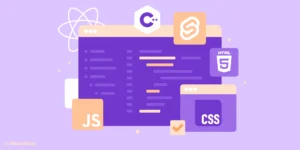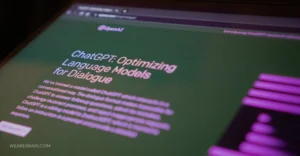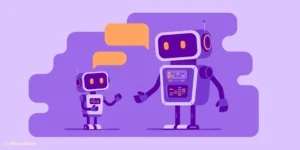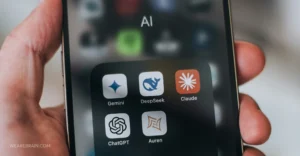The language services industry is undergoing a seismic shift driven by AI innovations, particularly in simultaneous interpreting, media localization, and corporate communication. Tools like KUDO and Interprefy, alongside big tech contributions from Google, Microsoft, and Zoom, are making AI integral to real-time multilingual communication. While AI excels in handling repetitive, low-stakes tasks, human interpreters remain essential in high-stakes settings, where cultural nuance, emotional intelligence, and precision are critical.
Interpreters must adapt by acquiring new skills, learning to work alongside AI, and specializing in complex scenarios where human expertise outshines machine capabilities. The future lies in a hybrid model, where AI enhances efficiency in lower-stakes tasks, leaving high-value work to human interpreters.
1. Introduction: The AI revolution in language services
AI is reshaping the interpreting landscape, especially in simultaneous interpretation, media localization, and corporate communication. Platforms like KUDO and Interprefy are integrating machine interpreting (MI) capabilities, while Google, Microsoft, and Zoom introduce AI-powered multilingual solutions to meet the growing demand for scalable interpretation services.
However, AI’s promise comes with both opportunities and challenges. Its efficiency and scalability contrast sharply with its inability to grasp cultural nuances and emotionally charged situations. As AI progresses, human interpreters remain crucial, especially in high-stakes scenarios that require precise, contextual communication.
2. The evolution of AI-powered simultaneous interpretation
AI-powered simultaneous interpretation leverages Automatic Speech Recognition (ASR), machine translation, and text-to-speech (TTS) to provide real-time translation during events. Platforms like KUDO and Interprefy are at the forefront of this movement, using AI for transcription and speech recognition, particularly in lower-stakes environments like business webinars and meetings.
Challenges:
- Cultural Nuance: AI struggles with idiomatic expressions and cultural references.
- Emotional Tone: Machines fail to interpret emotional undertones or manage highly sensitive dialogues.
Despite these limitations, AI’s potential to handle repetitive, low-complexity tasks frees human interpreters to focus on more nuanced interactions.
3. Key players and technologies in AI-driven interpretation
Several companies are spearheading AI-driven interpretation technologies, blending human expertise with AI capabilities:
-
KUDO: A hybrid platform combining human interpreters with AI tools. The platform uses machine interpreting (MI), speech transcription, and translation, but relies on human interpreters for nuanced tasks.
-
Interprefy: Specializes in Remote Simultaneous Interpretation (RSI) and incorporates AI for transcription and routine translation. Human interpreters remain essential for complex events.
-
Google Cloud Translation API & Microsoft Azure Cognitive Services: These platforms offer large-scale real-time translation, integrated into tools like Google Meet and Microsoft Teams. They are cost-effective but lack the contextual understanding needed for high-stakes settings.
-
Zoom: Integrates AI-driven live translation into virtual meetings and webinars, providing speech-to-text translations for international business communication.
4. Opportunities and challenges for human interpreters
Opportunities:
- Hybrid Models: AI handles repetitive, low-stakes tasks, allowing human interpreters to focus on high-stakes scenarios.
- New Skills: Interpreters can enhance their careers by developing AI literacy and specializing in fields like healthcare, legal interpretation, and diplomacy.
- Increased Demand: AI’s accessibility increases the global demand for interpreting in industries like media, healthcare, and crisis management.
Challenges:
- Commoditization and Pricing Pressure: As AI drives down costs for basic services, human interpreters face increased competition. Specialization becomes key for maintaining premium rates.
- Ethical Concerns: AI’s use in sensitive fields like legal or medical interpreting raises ethical questions about accuracy and empathy, where human interpreters excel.
- Data Privacy: Interpreters working with AI platforms must navigate data privacy and intellectual property concerns, ensuring control over their work.
5. AI in machine interpreting and media localisation
The integration of Machine Interpreting (MI) and AI-driven dubbing tools is accelerating across industries, impacting corporate communication and media localisation.
- Machine Interpreting (MI): Platforms like KUDO and Interprefy use ASR, AI transcription, and machine translation for real-time speech translation in corporate meetings. These tools are best suited for low-stakes events.
- AI-Driven Dubbing: Companies like Deepdub and Voiseed are transforming media localisation by providing voice cloning and dubbing for corporate videos, documentaries, and international broadcasts.
While AI is improving, human interpreters remain necessary for complex tasks that require emotional sensitivity and cultural intelligence, particularly in high-stakes settings.
6. Future trends: The role of human interpreters in a hybrid model
AI and Human Coexistence: The future of interpretation will rely on hybrid models. AI will manage repetitive tasks, while human interpreters focus on complex, high-value scenarios.
Industries that will continue to need human interpreters include:
- Diplomacy and International Relations: Where cultural nuance and precision are critical.
- Legal and Judicial Systems: For high-stakes legal communication.
- Healthcare: Where patient safety depends on accurate and empathetic interpretation.
- Crisis Management: For urgent, compassionate communication in emergencies.
- Media and Live Broadcasting: For real-time multilingual broadcasts.
Strategic Response
- Specialisation: Focus on high-skill areas where AI struggles, such as legal, medical, and diplomatic interpretation.
- Direct Client Relationships: Build personal brands and networks to counter the reliance on platforms.
- AI Literacy: Embrace AI tools to increase efficiency while focusing on tasks that require human expertise.
8. The role of interpreters in AI model training and development
AI companies need human interpreters to train, maintain, and control their models. Key roles for interpreters in AI include:
- Data Annotation and Curation: Interpreters help create high-quality, multilingual datasets that train AI systems to understand different languages and cultures.
- Bias Detection: By bringing cultural knowledge, interpreters help prevent biases in AI models.
- Real-Time Monitoring: Human interpreters monitor AI systems in sensitive areas like diplomacy, healthcare, and law to ensure accurate and culturally appropriate outputs.
- Training AI for Specialised Tasks: AI needs human expertise for complex fields like legal or medical language. Interpreters play a critical role in ensuring AI models understand the technicalities of these areas.
Conclusion: Adapting to AI-driven change
Interpreters are at a pivotal moment in their profession. By embracing hybrid models, specializing in high-value tasks, and gaining AI literacy, they can thrive in an evolving industry. AI will continue to handle low-complexity, repetitive tasks, but human interpreters will remain indispensable in high-stakes situations where nuance, emotion, and cultural understanding are paramount.
Key takeaways:
- AI is reshaping the interpreting industry, but human interpreters will continue to play a crucial role in high-stakes scenarios.
- Disintermediation, platformication, and commoditization are redefining business models, but specialization and direct client relationships will help interpreters maintain control.
- AI literacy is a vital skill for interpreters to develop as they adapt to new technologies.
By adopting a forward-thinking approach and collaborating with AI rather than competing against it, interpreters can ensure their relevance in the future of interpretation.










